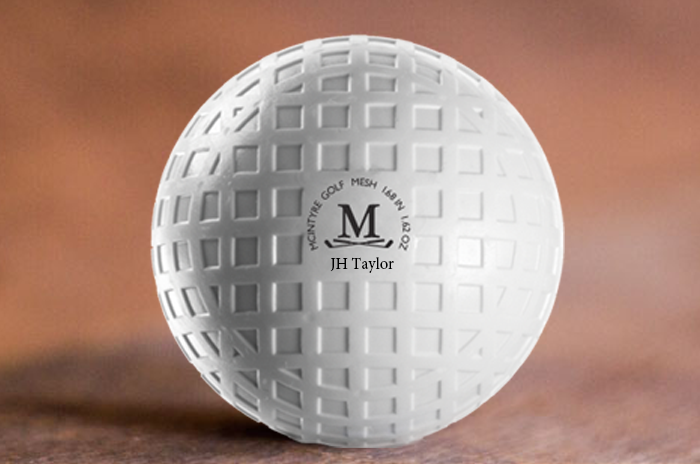When golfers talk about performance, the conversation usually revolves around drivers, irons, or putters. Yet, the golf ball — the only piece of equipment used on every shot — often gets overlooked. Choosing the right ball can dramatically affect distance, control, and overall scoring. To make a smart decision, it helps to understand the science behind compression, spin, and dimples, as well as how construction impacts playability for different skill levels.
In this guide, we’ll break down golf ball technology in plain English and help you choose the best fit for your game.
1. The Basics: Golf Ball Construction
At first glance, all golf balls may look the same. In reality, subtle differences in design can completely change how they perform. Modern golf balls typically fall into three categories:
Two-Piece Balls
- Structure: A solid rubber core with a durable ionomer (Surlyn) cover.
- Performance: Known for distance, low spin, and durability.
- Best for: Beginners and high-handicap players who want forgiveness off the tee and longer shots.
- Downside: Less feel and spin control around the greens.
Three-Piece Balls
- Structure: Core, mantle layer, and urethane or Surlyn cover.
- Performance: Balances distance with increased spin and control.
- Best for: Mid-handicap players who want a blend of forgiveness and short-game precision.
Multi-Layer Balls (4 or 5 layers)
- Structure: Core, multiple mantle layers, and a soft urethane cover.
- Performance: Maximum workability, spin control, and feel. Ideal for shaping shots and stopping power on the greens.
- Best for: Low-handicap players and professionals who value shot-making versatility.
👉 Looking for authentic, historically inspired golf balls? Explore our full replica golf ball collection at HickoryGolfStore, where tradition meets performance.
2. Compression: Power vs. Feel
Compression refers to how much the ball deforms against the clubface at impact. It is measured on a scale (usually between 30 and 120).
Low Compression (30–60):
- Softer feel, more deformation at impact.
- Easier to compress with slower swing speeds.
- Helps beginners and seniors maximize distance without swinging harder.
- Example: Many of the best golf balls for beginners fall into this category.
Mid Compression (70–90):
- Balanced option for a wide range of golfers.
- Suitable for moderate swing speeds (85–100 mph).
- Offers a mix of distance and control.
High Compression (100+):
- Firmer feel, designed for faster swing speeds (105+ mph).
- Produces less deformation, resulting in more energy transfer for powerful players.
- Provides enhanced control but punishes off-center strikes.
Practical takeaway: If you’re new to the game or have a slower swing, a softer ball will help you get the ball airborne more easily. Advanced players with fast swings should stick with higher-compression options for control.
3. Spin Rates: Controlling the Flight
Spin rate is another crucial factor that determines ball flight and control.
Low Spin Golf Balls
- Fly straighter with reduced side spin.
- Maximize roll-out for extra distance.
- Perfect for beginners who struggle with slices or hooks.
- Example: Many low spin golf ball models are two-piece designs.
Mid Spin Golf Balls
- Offer a balance of distance and feel.
- Provide moderate control around the greens.
- Best suited for recreational golfers looking for consistency.
High Spin Golf Balls
- Generate maximum lift and control on approach shots.
- Allow for shaping draws, fades, and stopping shots on the green.
- Favored by advanced players who demand precision.
4. Dimples: The Secret to Flight
Why do golf balls have dimples? The answer lies in aerodynamics. A smooth ball would travel only half as far because of drag. Dimples reduce air resistance and create lift, allowing the ball to fly farther and more predictably.
- Shallow, wide dimples: Promote higher ball flight.
- Deep, narrow dimples: Create a more penetrating trajectory.
- Pattern density (300–400 dimples): Affects stability and consistency in different weather conditions.
Fun fact: Modern golf balls typically have between 336 and 392 dimples — a sweet spot for balancing carry and stability.
5. Choosing the Best Ball for Your Game
Now that we’ve covered construction, compression, spin, and dimples, let’s translate this into practical advice for golfers at different levels.
Beginners & High-Handicap Players
- Look for two-piece, low-compression, low-spin balls.
- Benefits: Distance, forgiveness, affordability.
- Why: Minimizes hooks and slices while adding carry distance.
- Search for the best golf balls for beginners that make the game more enjoyable and less frustrating.
Intermediate Players
- Consider three-piece, mid-compression balls.
- Benefits: More feel around the greens without sacrificing distance.
- Why: Provides versatility as you refine your swing and improve consistency.
Advanced Players & Professionals
- Opt for multi-layer, high-compression, urethane-covered balls.
- Benefits: Shot-shaping ability, maximum spin, tour-level control.
- Why: Designed for players who can consistently strike the ball and benefit from added precision.
6. Historical Perspective: Tradition Meets Modern Innovation
Golf balls have evolved dramatically from feather-stuffed “featheries” in the 17th century to the advanced multi-layer urethane balls of today. At HickoryGolfStore, we honor this rich tradition by offering both modern performance products and authentic replicas.
If you’re fascinated by history, check out our JH Taylor replica golf ball — a tribute to one of golf’s great champions, combining timeless aesthetics with playable quality.
7. Final Thoughts: The Right Ball Makes All the Difference
Selecting the right golf ball isn’t just about brand preference — it’s about matching technology to your swing. By understanding compression, spin, and dimples, you’ll be able to make smarter choices that improve distance, accuracy, and short-game control.
Whether you’re a beginner looking for forgiveness, an intermediate player seeking balance, or a low-handicap golfer demanding precision, there’s a ball tailored to your needs.
👉 Ready to elevate your game? Explore the replica golf ball collection at HickoryGolfStore and experience the perfect blend of tradition and innovation.

